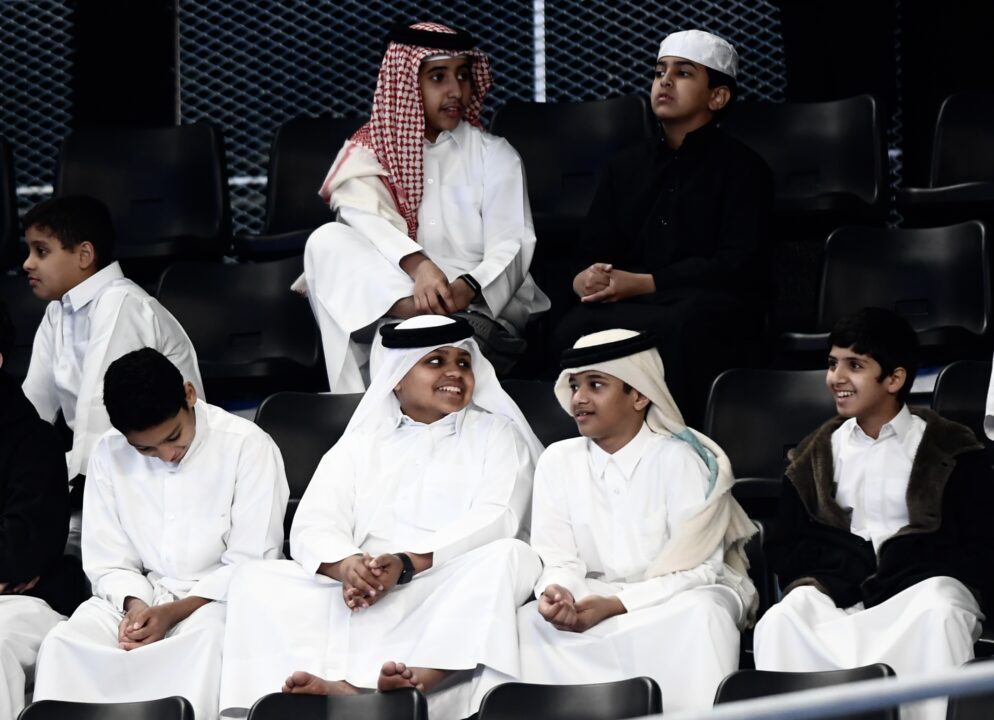I’ve been Doha for the first time in 2014, as an athlete participating the World Swimming Championships SCM with th Italian Team. I recall being impressed by the multitude of construction sites, cranes, and buildings under construction. The city seemed to grow day by day under my eyes on the journey between the hotel and the pool. Ten years later, the pool where I had competed is now just a small part of an enormous sports complex, in fact, the largest indoor one in the world.
The city appears to live in a continuous oscillation between the past and the future, without truly seizing the present. The skyscrapers of the Pearl district reflect their light onto the desert-colored walls of the souq, the market of spices, fabrics, and jewelry. Entering the Aspire Dome is a mystical experience, primarily physically because it’s easy to get lost and walk for kilometers inside the building without finding the way out.
Inside, time seems to stand still, and the air conditioning makes you forget that you’re below the equator; outside, it could be day or night, but it’s hard to tell because the skylights are covered with large tarps, and all the light comes from huge artificial spotlights illuminating everything.
The population in Doha has grown from 300,000 to almost 1.2 million in twenty years. Now, the population of Doha is predominantly composed of foreigners, with Qatari citizens being a minority. The majority of expatriates in Qatar come from South-East and South Asian countries, mainly India, Pakistan, Sri Lanka, Nepal, the Philippines, and Bangladesh. All the volunteers at the event, all the workers in supermarkets, hotels, come from these countries; all the Uber drivers I took when the bus was late were non-Qatari.
The same feeling that leaves you in awe seeing the artificial city also arises when you see the almost empty stands during the finals of this atypical World Championship. The crowd present mainly consists of friends and relatives who have come from afar to support athletes from their own nation, who probably took the opportunity to visit this part of the world. Many flags are present in the stands, but all are waved by small groups of people. During the heats, some groups of young students are present, brought to see an event they don’t know much about, often shouting and applauding at the wrong time, during the start of the race, distracting the athletes at the moment of maximum tension. (It seems that the same thing happened in the diving competitions, resulting in the athlete having to repeat the dive).
The choice to use many light effects during the finals somehow manages to hide the absence of local spectators, but when the lights come on, the warmth of the competitions seen in more involved arenas like Budapest or Rome is missing.
In these weeks in Doha, the following sports events have taken place simultaneously: the World Swimming Championships, the Asian Cup in football (won by Qatar), a women’s ATP tennis tournament, and probably also other events, but the city doesn’t seem to really notice. Everything coexists in a daily chaos of traffic, both of cars and people. It seems like everyone is here for a different reason, like a huge fair where each has rented a pavilion for their personal interest. A strange, fascinating place, suspended in space and time, the desire to show off above all, summed up best by the choice to award athletes with the largest medals I’ve ever seen.

Love this article, this POV makes a really interesting read
I really enjoyed reading this piece of writing ! This World Championship even existing is paradoxical in more than one way, seeing that it reflects some aspects of the city is quite fitting…
Very fitting.